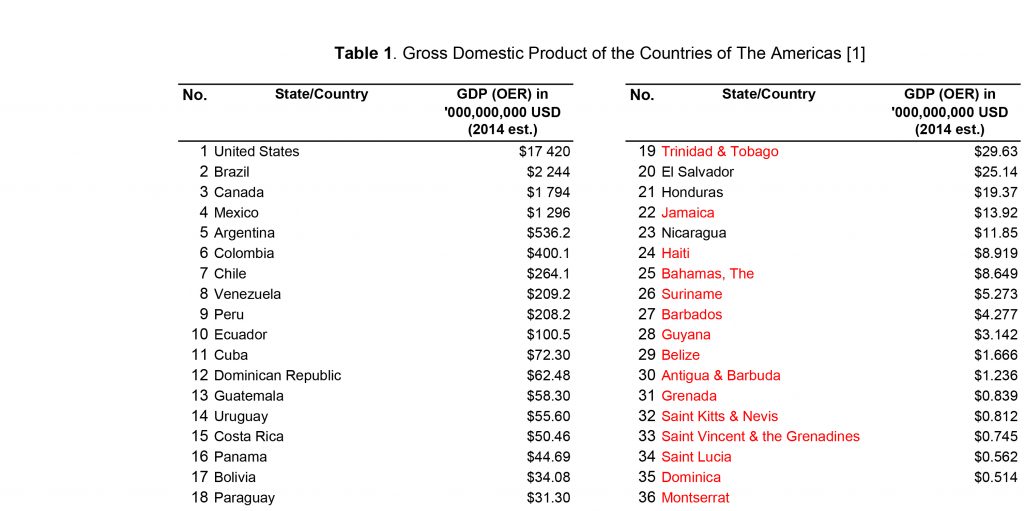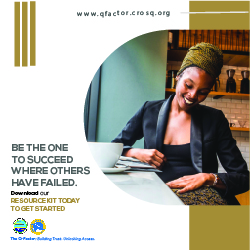Developing Metrology in Small Island Developing States – The Caribbean Community (CARICOM) Experience
- crosqblog
- on Jan, 06, 2020
- Category Demand for Quality
- Comments Off on Developing Metrology in Small Island Developing States – The Caribbean Community (CARICOM) Experience
Part 1
by David Tomlinson
Abstract:The development of metrology in the Caribbean has generally been adversely impacted by many of the specific social, economic and environmental vulnerabilities associated with their characterization as Small Island Developing States (SIDS). More specifically, in many countries of the Caribbean Community (CARICOM), whilst recognized by some of the major industries, metrology is often not high on the list of priorities for policy makers, and, is still more or less unknown to the majority of citizens, due in the main to the lack of awareness and appreciation of the impact of measurement science on their lives. Also, in addition to the limiting cross cutting theme of finance, many National Metrology Institutes (NMIs) are faced with the challenges of limited human and customer capital, weak regional transportation modalities, public misperception and the lack of suitable laboratory infrastructure. In order to address these challenges, the CARICOM NMIs have unified within the framework of CARIMET, the Caribbean sub-region of the Inter-American Metrology System (SIM) to pool assets and develop regional mechanisms to address the measurement demands across the region.
1. INTRODUCTION
Currently, the United Nations (UN) has identified three geographic regions; 1. the Caribbean, 2. the Pacific and 3. AIMS (the Atlantic, Indian Ocean, Mediterranean and South China Sea) as the location of Small Island Developing States (SIDS). This paper presents an overview of the challenges being faced by the Caribbean Community (CARICOM) in the development of metrology capabilities in its Member States, the strategies being employed and lessons learnt in addressing same.
2. THE HISTORICAL AND ECONOMIC CONTEXT OF CARICOM
The sustainable development of Small Island Developing States (SIDS) continues to be a challenge for political leaders and policy makers. In addition to the issues faced by developing nations, SIDS grapple with peculiar vulnerabilities arising mostly from the disproportionate impact of expansive globalisation and climate change, insularity, high per unit transportation costs, limited natural resources and high import levels. Faced with these challenges many SIDS began banding together long before the term SIDS was coined. Seeing the potential benefits of cooperation along with the lessons learned from the British West Indies Federation, the political leaders of Barbados, Guyana, Jamaica and Trinidad & Tobago created the Caribbean Community and Common Market with the signing of the Treaty of Chaguaramas in 1973. Over the following three (3) decades the total number of signatories to this Treaty grew to fifteen (15). During this time the CARICOM Single Market and Economy (CSME) was established with the Grand Anse Declaration in July 1989 and the need for a revised Treaty was recognised. As a result, the Revised Treaty of Chaguaramas was signed on 5 July 2001 establishing the Caribbean Community (CARICOM).
CARICOM is made up of fifteen (15) SIDS of which 12 are the smallest economies of the 35 economies in The Americas as measured by their Gross Domestic Products (GDPs). The largest economy within CARICOM is Trinidad and Tobago followed by Jamaica [1]. In most of these countries the service based industries are the major contributor to GDP with Tourism being the number one income earner for most countries with others such as banking and remittances also contributing significantly to GDP. Being former colonies, CARICOM SIDS have a long history of supplying natural resources such as sugar and spices to their respective metropoles and this tradition continues with industry in CARICOM being mostly focused on the supply of natural resources and raw materials, mostly agricultural and mining based, to developed nations. Manufacturing within CARICOM is mostly limited to five (5) countries, Belize, Guyana, Jamaica, Suriname and Trinidad & Tobago. Of these countries Trinidad & Tobago enjoys the largest share due to its indigenous source of fossil fuels.

The small size of the region’s economies and limited demand for Quality Infrastructure (QI) has meant that in most CARICOM countries the National Standards Bureaus (NSBs) have responsibility for the four main pillars of QI (i.e. Standardisation, Metrology, Accreditation and Conformity Assessment). In most CARICOM Member States, both regulatory (legal) and non-regulatory (industrial) metrology services fall within the mandate of the NSB and there are different degrees of development between member states. In respect of scientific/research metrology, standards are adopted from the more advanced economies.
The variation seen in economic size and level of development of each country can also be seen in the maturity of the respective national metrology infrastructure. Jamaica has the longest history in developing metrology and the largest National Metrology Institute (NMI) within CARICOM with over twenty-five (25) years of cooperation with the German NMI, PTB and assistance from other institutions such as the World Bank. Trinidad & Tobago as a part of its national support to its manufacturing sector has developed its metrology service using national funds and cooperation with a variety of regional and international NMIs.
In all CARICOM SIDS the evolution of metrology has followed the historical pattern of the development of metrology as a service required to support the verification and harmonisation of measurements in trade. In addition to the two aforementioned countries; other countries such as Grenada, Guyana and Saint Lucia have well-developed legal metrology programmes and growing industrial metrology services to support these legal metrology programmes. The remaining countries are at varied stages of development with The Bahamas and Suriname now working to establish their NMI within their respective National Standards Bureau.
Reference
[1] The World Factbook. Retrieved July 15, 2015 from the CIA website: https://www.cia.gov/library/publications/the-world-factbook/
*NEXT: Part 2 – Challenges in the CARICOM Metrology Infrastructure




